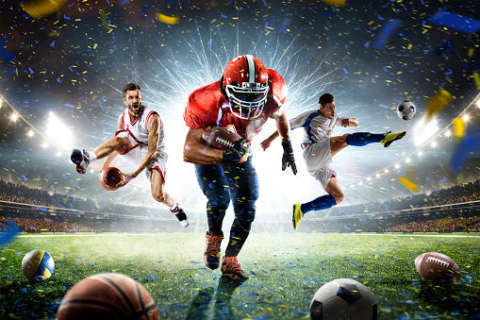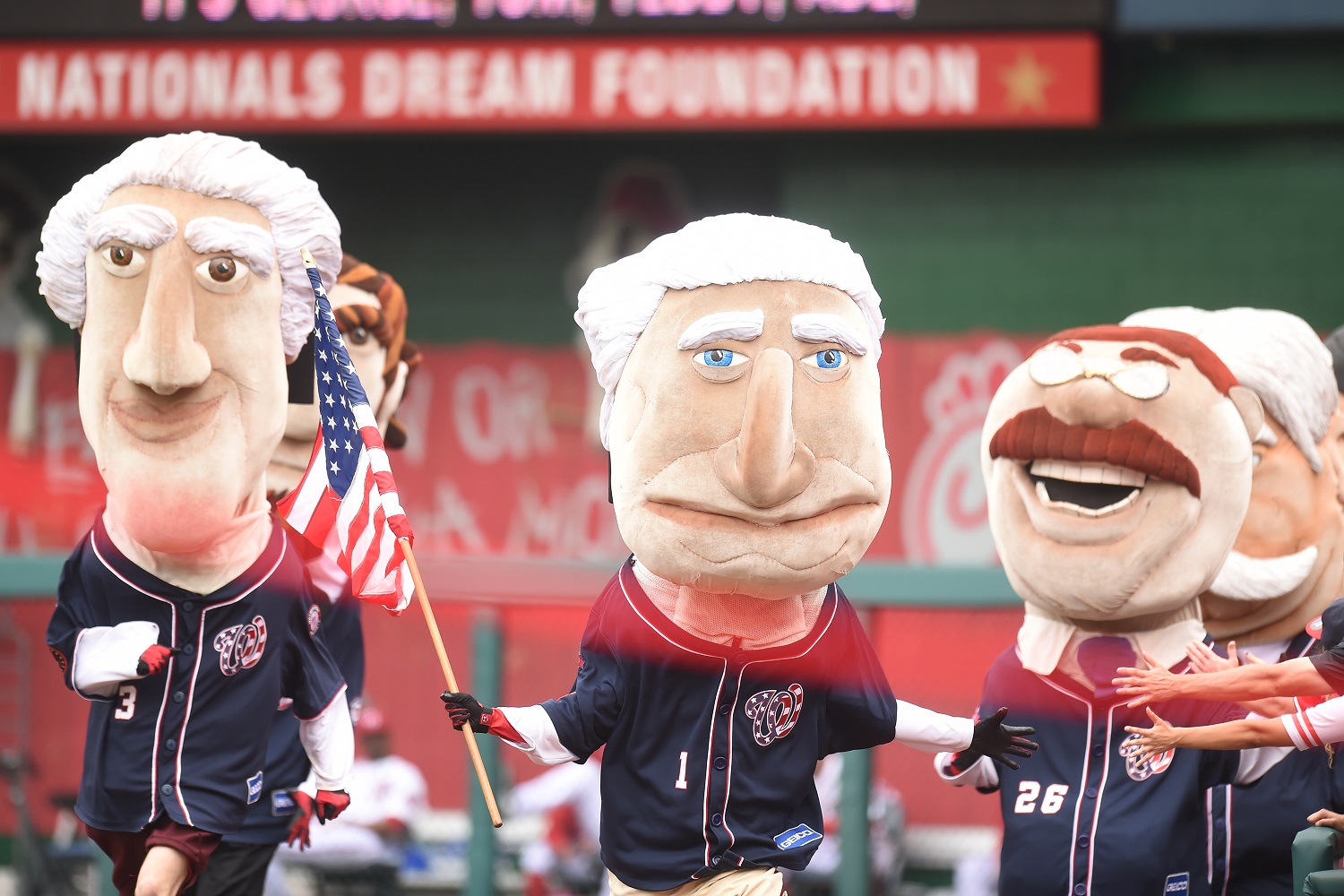
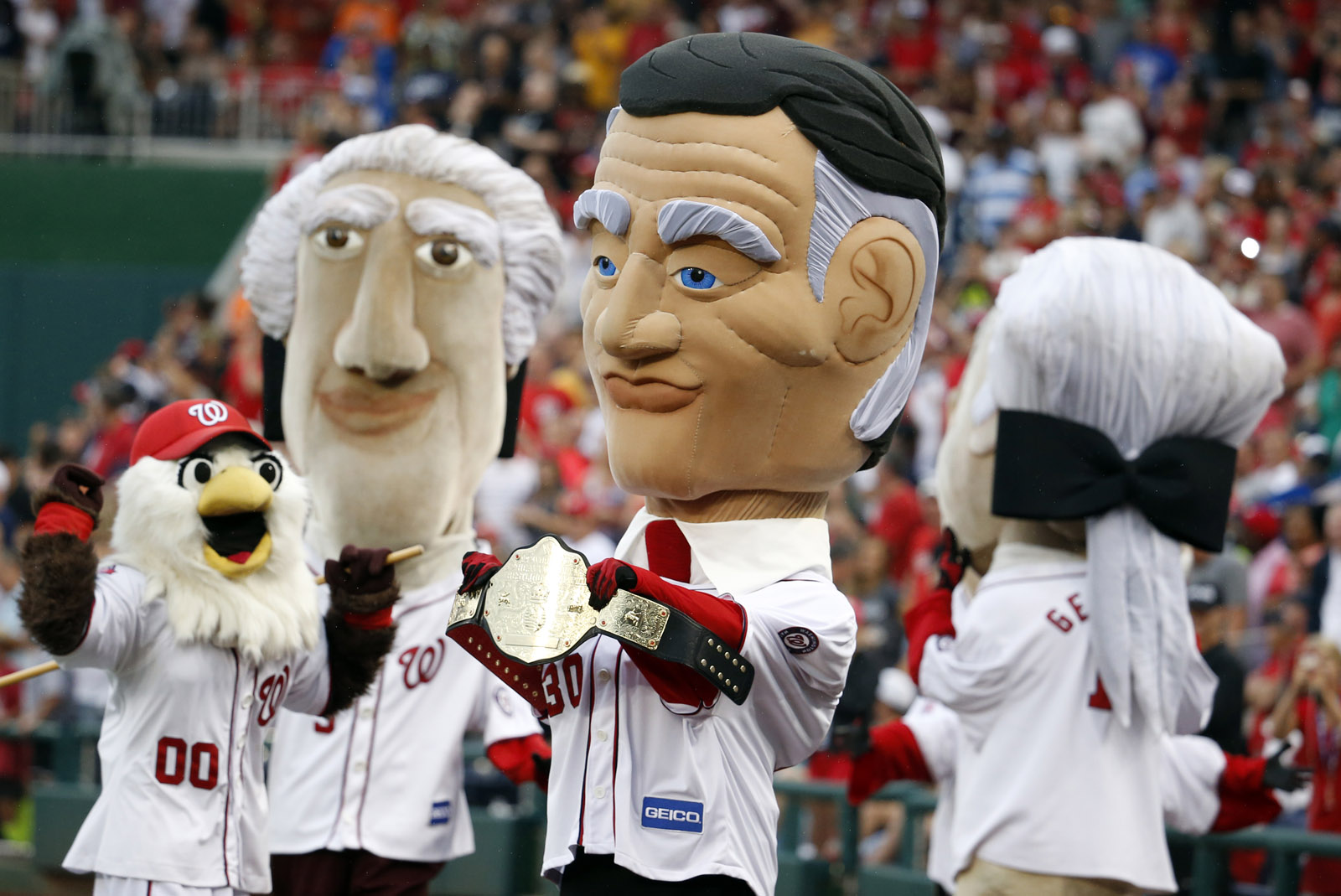
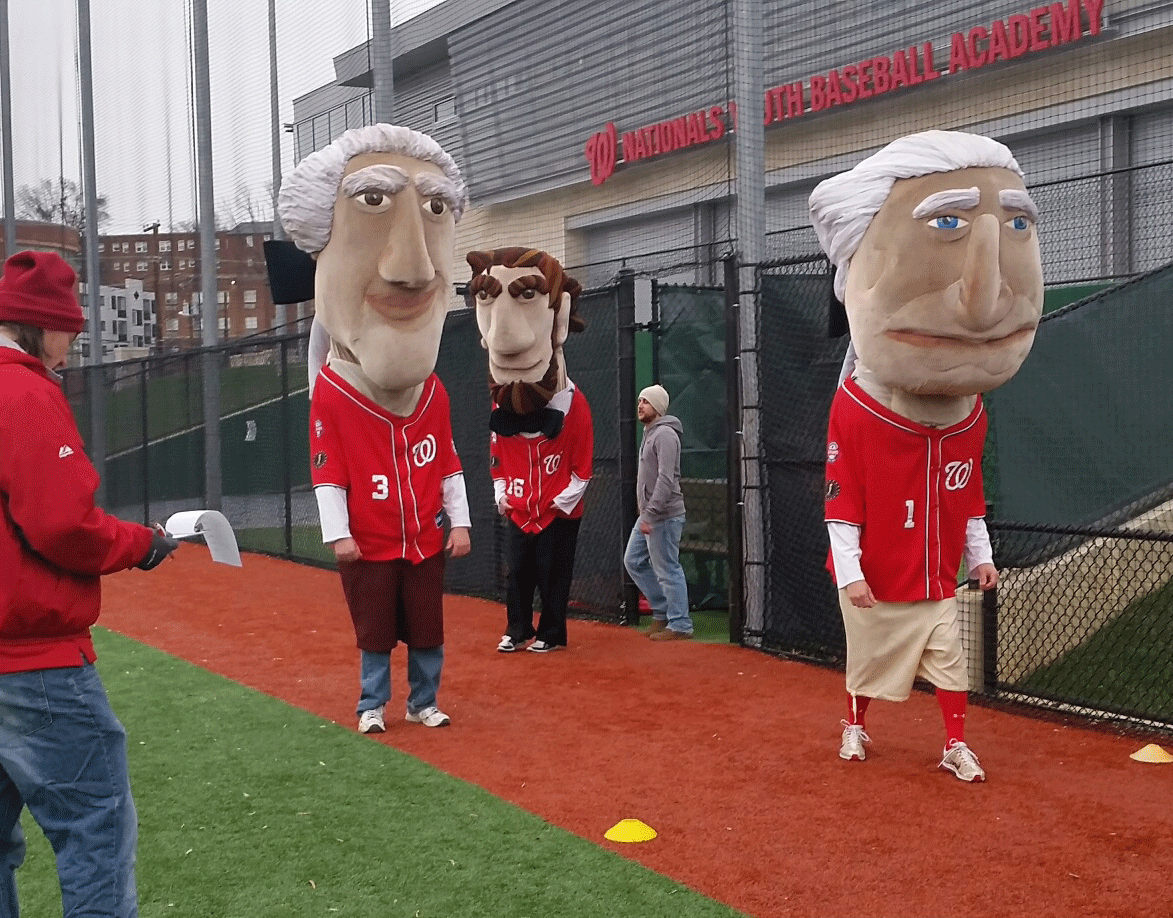
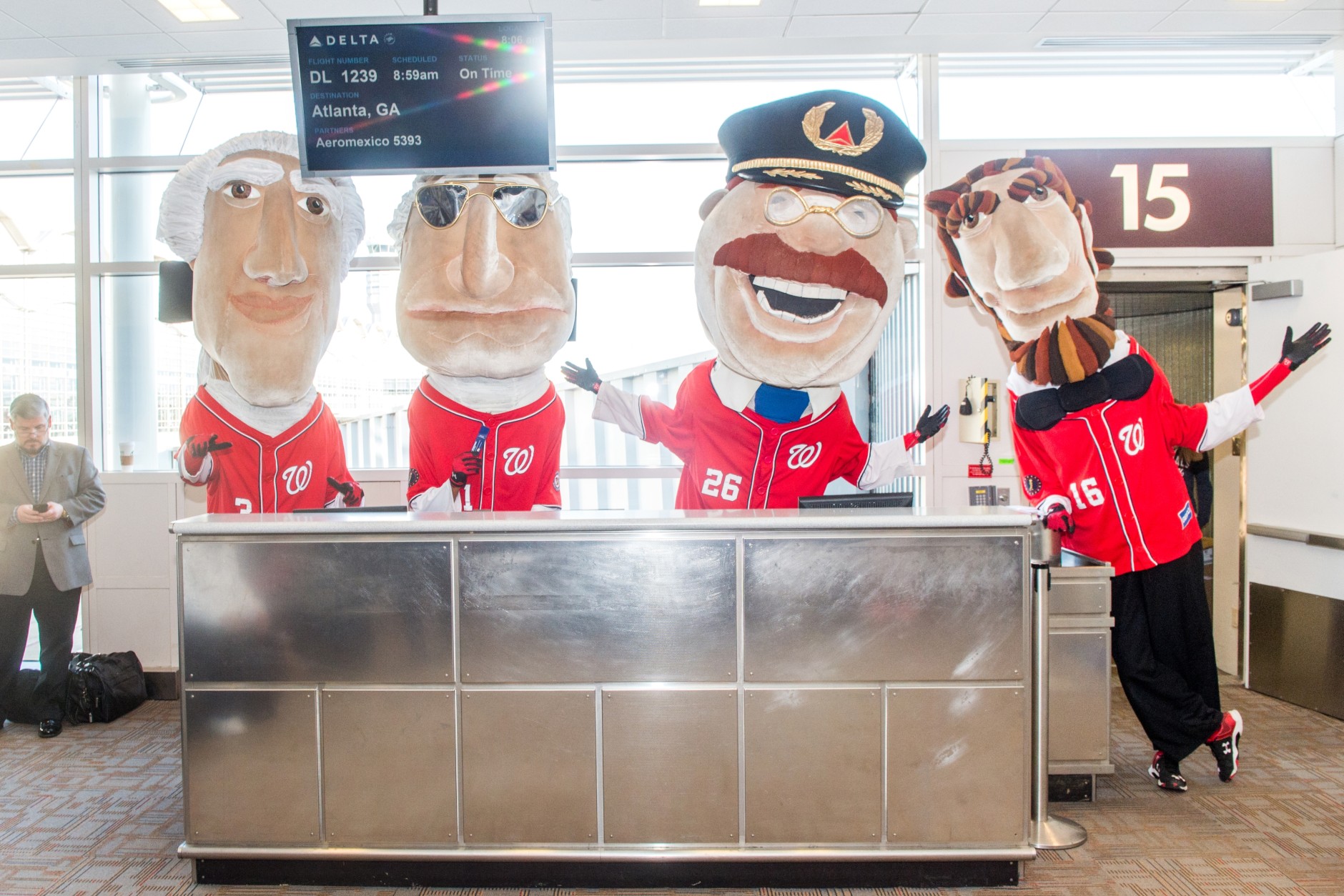
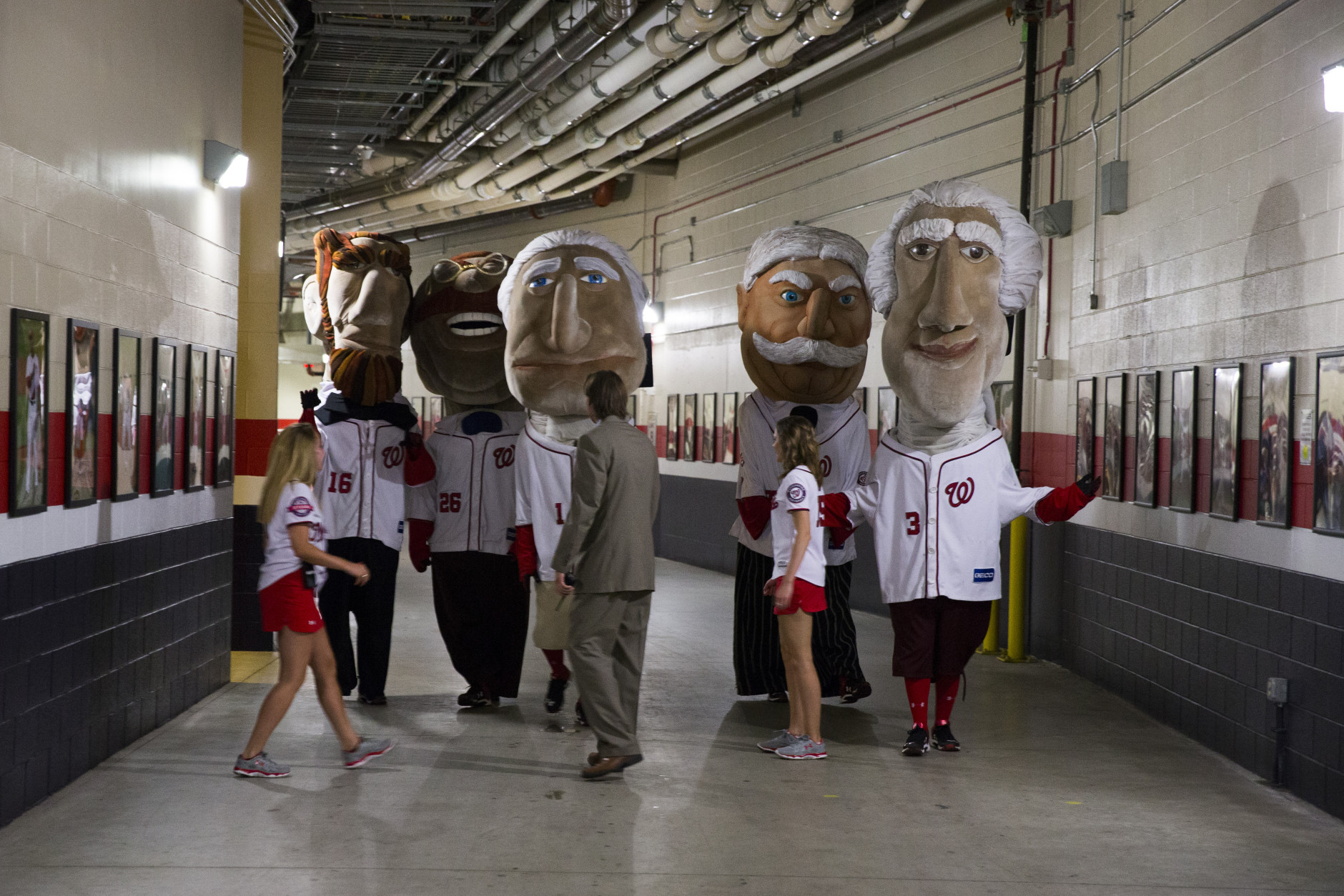
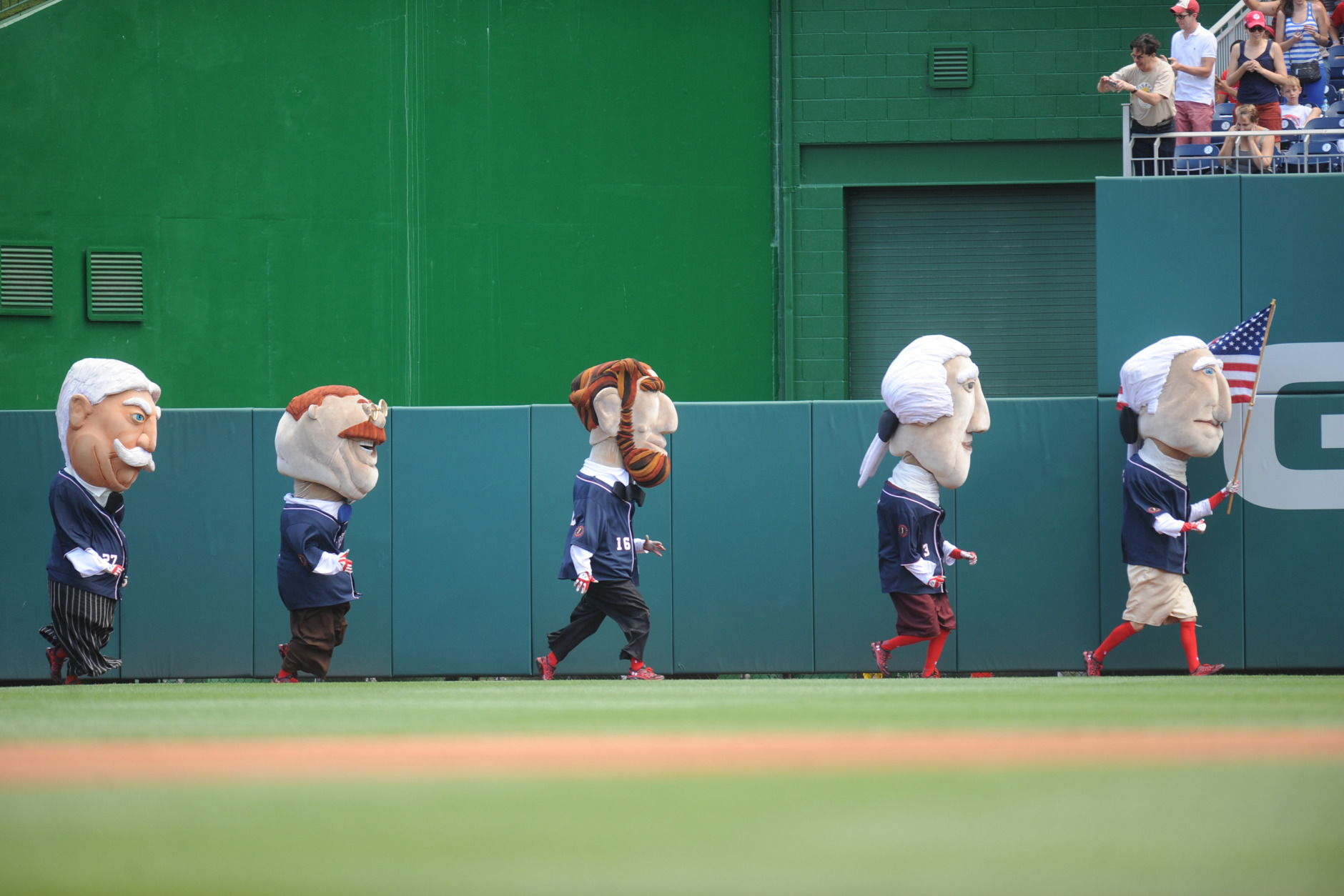
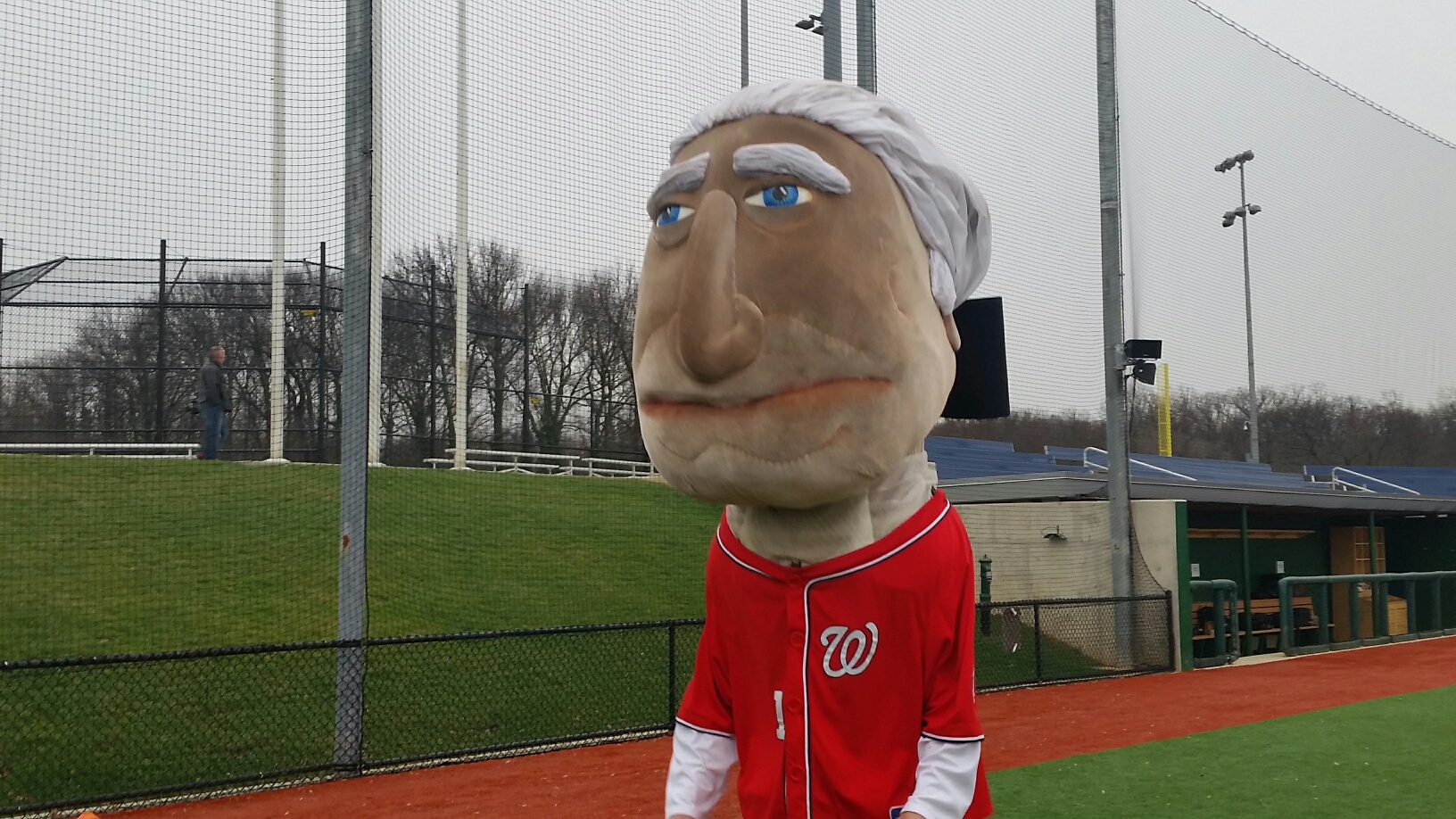

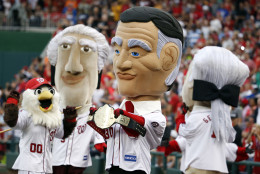
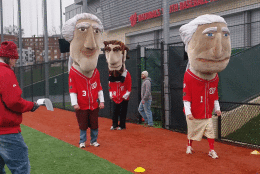
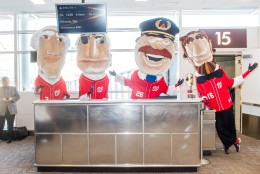

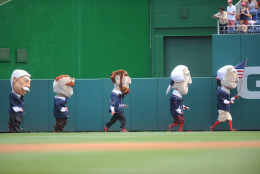
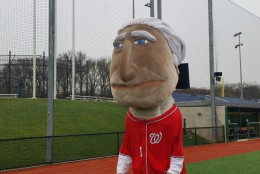
WASHINGTON — The Washington Nationals’ Racing Presidents are among the most well-known mascots in professional sports today. They make public appearances, have blogs devoted to their races and even have their own lottery scratchers. They also star in their own SportsCenter commercial.
But the crew has expanded beyond the original four faces of Mt. Rushmore in recent years. First, William Howard Taft joined the fray in 2013. As a political rival of Teddy Roosevelt — the most popular Racing President, who finally won his first race late in 2012 — “Bill” made plenty of sense. Then, last season, the Nationals announced a partnership with the White House Historical Association (WHHA), where they would add one new Racing President each year, solely for that season.
The WHHA is currently celebrating each president in chronological succession with their annual White House ornaments. Last year, that meant Calvin Coolidge, who also appeared as the Racing President for the 2015 season. This year, that meant Herbert Hoover, or “Herbie.”
Aside from the actual mascot’s general creepiness, Hoover seemed at odds with the Rushmore Four and his other predecessors. Nevertheless, as unpopular and poor a president as he may have been, his selection follows in line with the WHHA’s process. All of which leads us to 2017.
Those well-versed in presidential history already know where this is going. After Hoover drove the country into the Great Depression, America elected Franklin Delano Roosevelt the 32nd president of the United States. FDR was actually elected four straight terms (back before term limits) and was incredibly popular, known for his New Deal, and for his fireside chats, delivered to the nation via radio.
He was also in a wheelchair for most of his adult life.
Roosevelt contracted polio in 1921, causing permanent paralysis of his legs. He went to great lengths to hide his condition, never allowing his disability to be seen publicly.
It doesn’t take much imagination to realize how running a mascot version of a disabled former head of state might open itself up to disaster especially considering the physical nature of the races, which often involve substantial contact between the competitors. Many fans have already questioned whether or not the organization will actually feature a Racing President in a wheelchair.
Are the Nats really going to introduce a "racing" FDR? https://t.co/mi3U8f4Jo1
— Ernie Tedeschi (@ernietedeschi) April 11, 2016
Nationals added Herbert Hoover to their "Racing Presidents." I'm guessing FDR would have been in bad taste?
— Josh Timmers (@Cubsminorswrap) April 11, 2016
How can wheelchair FDR not be the next Racing President?
— Sam Sokol (@SamSokol42) April 10, 2016
Nats have added Taft, Coolidge, Hoover last three years. Next is FDR. Could we have a wheelchair racing mascot? https://t.co/8slYPMZlxX
— Nick Bove (@NickBoveOnAir) April 9, 2016
But to depict Roosevelt without the wheelchair would be intellectually dishonest. To skip him altogether would be worse, a gutless dodging of an issue only created by the organization’s own making.
There could be a logistical issue of what wheels might do to a warning track, especially a soft one if the field was a bit wet. He could participate in the race in other ways at the start or finish line, without being a part of the melee. But those issues are secondary to the larger question, and could no doubt be worked out before Opening Day 2017.
So, what to do?
There would be “absolutely nothing wrong with featuring a Racing President in a wheelchair,” said Rick Smith, Executive Director of the Bay Area Outreach and Recreation Program, the leading provider and promoter of adaptive sports and accessible recreation for children and adults with physical disabilities in the greater San Francisco Bay Area.
“If anything it can bring awareness to the fact that people with disabilities can be athletic in the same ways that able body individuals are,” he added.
Smith’s point might alleviate concerns over perceived insensitivity. A disabled Racing President winning races and competing on an even playing field with his peers could help facilitate a larger discussion and help normalize the stigma of disability in America. The CDC estimates that one in five Americans — 53 million — have a disability of some kind, while 2.2 million people in the U.S. depend on a wheelchair for basic mobility.
The Nationals did not respond to questions of whether they are continuing to partner with the WHHA or if they had any plans for a Racing FDR, but their press release announcing “Herbie” noted that they were “in the second year of a multiyear partnership.”
Even if Roosevelt hid his disability in his own life, perhaps by acknowledging it now, Racing FDR (“Franky?”) can be an instrument to an open discussion about disabled Americans everywhere.


